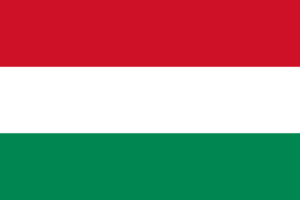Hungary | History, Capital, Language, Flag, Facts & Geography of Hungary
History of Hungary:
Today’s Hungary was originally inhabited by several peoples and empires. It was also part of the Roman Empire at times. In 895 the Magyars came to this country. These people later came to be called Hungarians. Around 1000 AD, the Kingdom of Hungary was born. It was a Christian kingdom, ruled for centuries to prevent the expansion of the Ottoman Empire into Europe. The kingdom then became part of the Monarchy of Austria-Hungary.
After the defeat in World War I, the empire collapsed and Hungary was greatly reduced. During World War II, Hungary initially sided with Germany, but later tried to defect. After World War II, Hungary became a communist country and came under Soviet rule. After the collapse of the Soviet Union in 1990, Hungary held its first free elections and launched a free market economy. It became part of the European Union in 2004.
Get Free Counseling
Information about Hungary:
| Capital | Budapest |
| Population | 10,156,239 (Source: 2023 worldometer) |
| Major Cities | Budapest (capital), Miskolc, Pécs, Debrecen, Szeged, Győr, Kecskemét, Nyíregyháza, Székesfehérvár |
| Borders | Slovakia to the north, Ukraine to the northeast, Romania to the east and southeast, Serbia to the south, Croatia and Slovenia to the southwest, and Austria to the west |
| Gross Domestic Product (GDP) | $178,789,000,000 (2022 worldometer) |
| Currency | forint (HUF) |
Flag of Hungary:
Hungary Economy Key Industries:
Hungary Major Industries: mining, metallurgy, construction materials, processed foods, textiles, chemicals (especially pharmaceuticals), motor vehicles
Hungary Agricultural Products: wheat, corn, sunflower seed, potatoes, sugar beets; pigs, cattle, poultry, dairy products
Hungary Natural Resources: bauxite, coal, natural gas, fertile soils, arable land
Hungary Major Exports: machinery and equipment 61.1%, other manufactures 28.7%, food products 6.5%, raw materials 2%, fuels and electricity 1.6% (2003)
Hungary Major Imports: machinery and equipment 51.6%, other manufactures 35.7%, fuels and electricity 7.7%, food products 3.1%, raw materials 2.0% (2003)
The Geography of Hungary:
Total Size of Hungary: 93,026 km² (source: 2022 The world factbook)
Geographical Low Point of Hungary: Tisza River 78 m
Geographical High Point of Hungary: Kekes 1,014 m
Climate of Hungary: Temperate; cold, cloudy, humid winters; warm summers
General Terrain of Hungary: mostly flat to rolling plains; hills and low mountains on the Slovakian border
World Region or Continent of Hungary: Europe
Geographical Coordinates: 47 00 N, 20 00 E
The People of Hungary & Culture
Hungary Government Type: parliamentary democracy
Hungary Nationality: Hungarian(s)
Hungary National Holiday: Saint Stephen’s Day, 20 August
Hungary Independence: 1001 (unification by King Stephen I)
Hungary National Symbol: Holy Crown of Hungary (Crown of Saint Stephen); turul (falcon)
Hungary National Anthem or Song: Himnusz (Hymn)
Hungary Languages Spoken: Hungarian 93.6%, other or unspecified 6.4% (2001 census)
Hungary Religions: Roman Catholic 51.9%, Calvinist 15.9%, Lutheran 3%, Greek Catholic 2.6%, other Christian 1%, other or unspecified 11.1%, unaffiliated 14.5% (2001 census)
Interesting Facts about Hungary:
Lake Balaton in Hungary is the largest lake in Central Europe. Lake Balaton, also known as the “Hungarian Sea”, is 77 km long, 3-14 km wide and has an area of 600 km². Interestingly, its average depth is only 3.3 m (11 ft).
Hungary’s terrain is mostly flat to hilly, with most of the country lying below 200 m (656 ft) above sea level. The country’s highest mountain is Quekes, at 1,014 m (3,326 ft) in the Matola Mountains northeast of Budapest.
Hungary is famous as a country of hot springs and spas. Hungary has long been one of the largest spa areas in Europe. The natural hot springs release more than 80 million liters of mineral-rich water daily.
Hungary is rich in thermal springs, and in the country he has more than 1,300 thermal springs, 300 of which are used for bathing and medical purposes.
Hungary has the world’s largest known thermal cave system. Budapest, the capital of Hungary, has the largest known thermal cave system in the world, with 80 geothermal springs and about 200 caves discovered so far.
One interesting fact about Hungary is that Europe’s largest synagogue is located here. Budapest’s Dohany Street Synagogue is the largest synagogue in Europe with a seating capacity of 3,600 and a total capacity of over 5,000 worshipers.
Football remains Hungary’s most popular sport, and Hungarians still remember his 1953 match of the century when Hungary beat England at Wembley Stadium in England.
The Hungarian national dish is gouyas. Traditional goulash is a thick soup or stew made with peppers, carrots, tomatoes, potatoes, onions, diced beef and green peppers. Dating back to the 9th century, it was eaten by Magyar shepherds.
